
Looking for a cheatsheet you can rely on to create an effective social media branding strategy?
We’ve got you covered!
In today’s guide, we’ve put together 14 essential do’s and don’ts to help you streamline your social media branding efforts.
Grab a pen and paper and let’s get started!.
Audience do’s and don’ts
1. Do create relevant content for a specific target audience
Posting quality content tailored to a niche audience is key to creating a strong social media brand identity.
If you’re unsure which audience segment you’re targeting in your upcoming campaigns, pause your social media marketing strategy until you know who you’re speaking to.
For instance, “We’re targeting Amazon sellers looking for funding partners and ongoing working capital”. Or, “We’re targeting venues that host creative events in Dallas and Austin, Texas”.
It’s also important to ensure your social media content fits within your overarching content marketing strategy.
When a brand’s website and social media content are in perfect harmony, it creates a powerful synergy that strengthens the brand’s online presence and enhances its overall impact.
For instance, Termly, which offers a privacy policy generator, exemplifies this seamless integration between its site and social media channels. Termly’s website offers comprehensive privacy policy solutions, and its informative posts on Twitter about writing privacy policies complement and reinforce its expertise.
Here’s an example of the privacy policy generator offer at the top of its website:
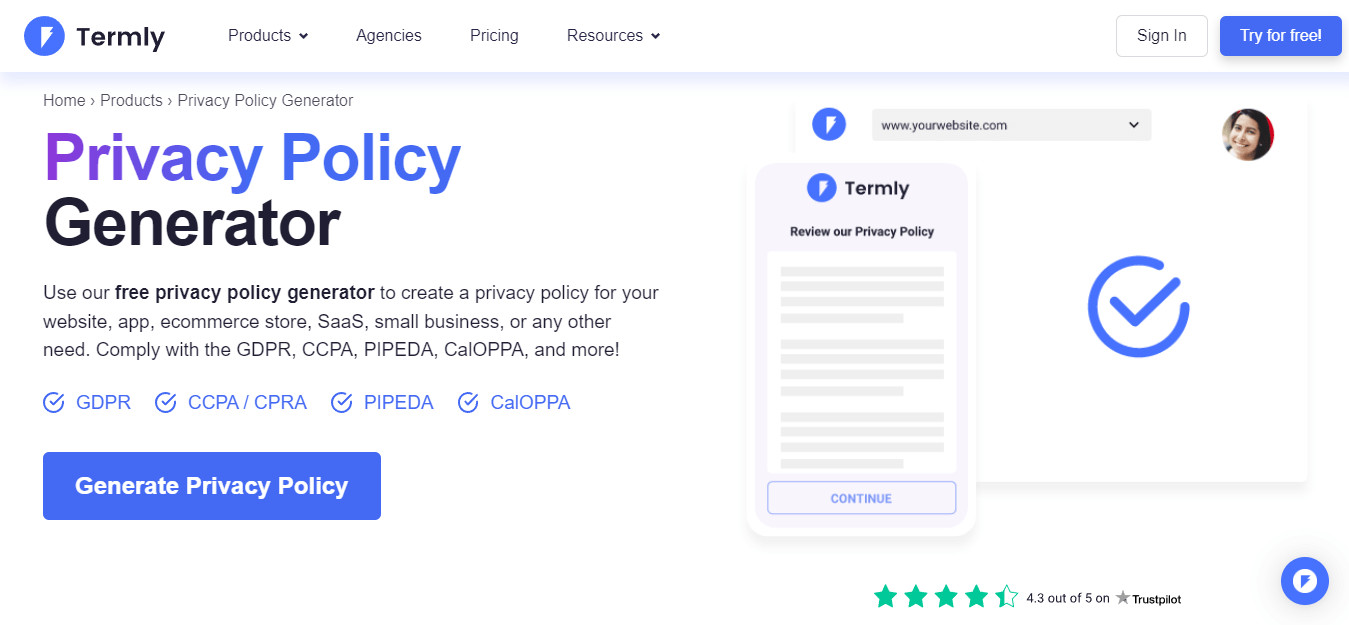
And here’s an example of one of its informative posts on Twitter about how to write a privacy policy:
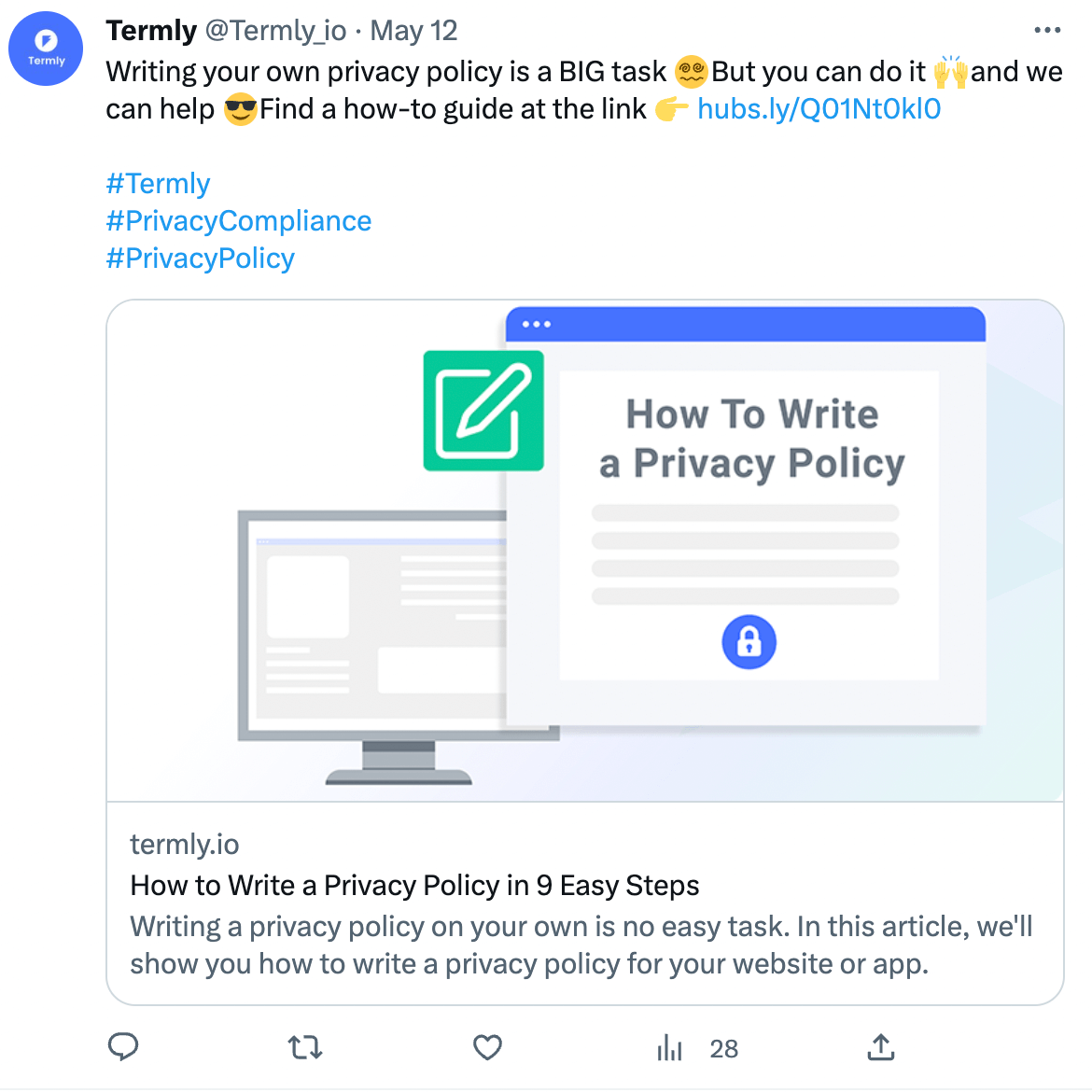
This consistency builds brand credibility and trust, as users see a cohesive narrative that showcases Termly’s knowledge and reliability across all of its marketing channels. However, Termly also varies the content and context in which it positions its tool so that it feels native to each marketing channel. More on this in a bit!
2. Don’t ignore your audience’s pain points
When creating content for your target audience, it’s essential to show them that you understand them and you know how to solve their problems. Demonstrating your brand’s value is impossible if you don’t know your audience’s pain points.
For instance, if you’re a career coach for new graduates and your audience struggles with networking, resume-building, and finding their first jobs, you need to create content that focuses on solving those problems.
Of course, you don’t have to give away all of your special tips and tricks! Save your mastery-level coaching for paying clients — but be sure to dangle the carrot enough to show your unique value and expertise.
3. Do track your audience’s engagement rate
Monitor audience engagement to understand what’s working and what’s not.
For example, you might learn that branded hashtag contests lead to quick sales and targeted social media followers. You might also learn that inspirational videos with opt-in invitations help you build your email list better than other lead generation initiatives.
With this in mind, you can pour more resources into UGC campaigns and inspirational videos, as opposed to other types of content, to encourage a better engagement rate.
4. Don’t obsess over vanity metrics
While having a high number of followers, likes, and comments is great, what’s really important is if social media is helping you hit your business goals.
For instance, if your goal is to use social media to generate more targeted leads to your website, then you’ll need to track how many qualified website visitors you get as a result of your social media content. In this case, getting more followers or comments isn’t a reflection of you hitting your goals.
5. Do ask for audience feedback
Polls, surveys, and questionnaires can make for some of the best focus group material. Reach out to your audience to see what they’d like to see more of and how you can better serve them.
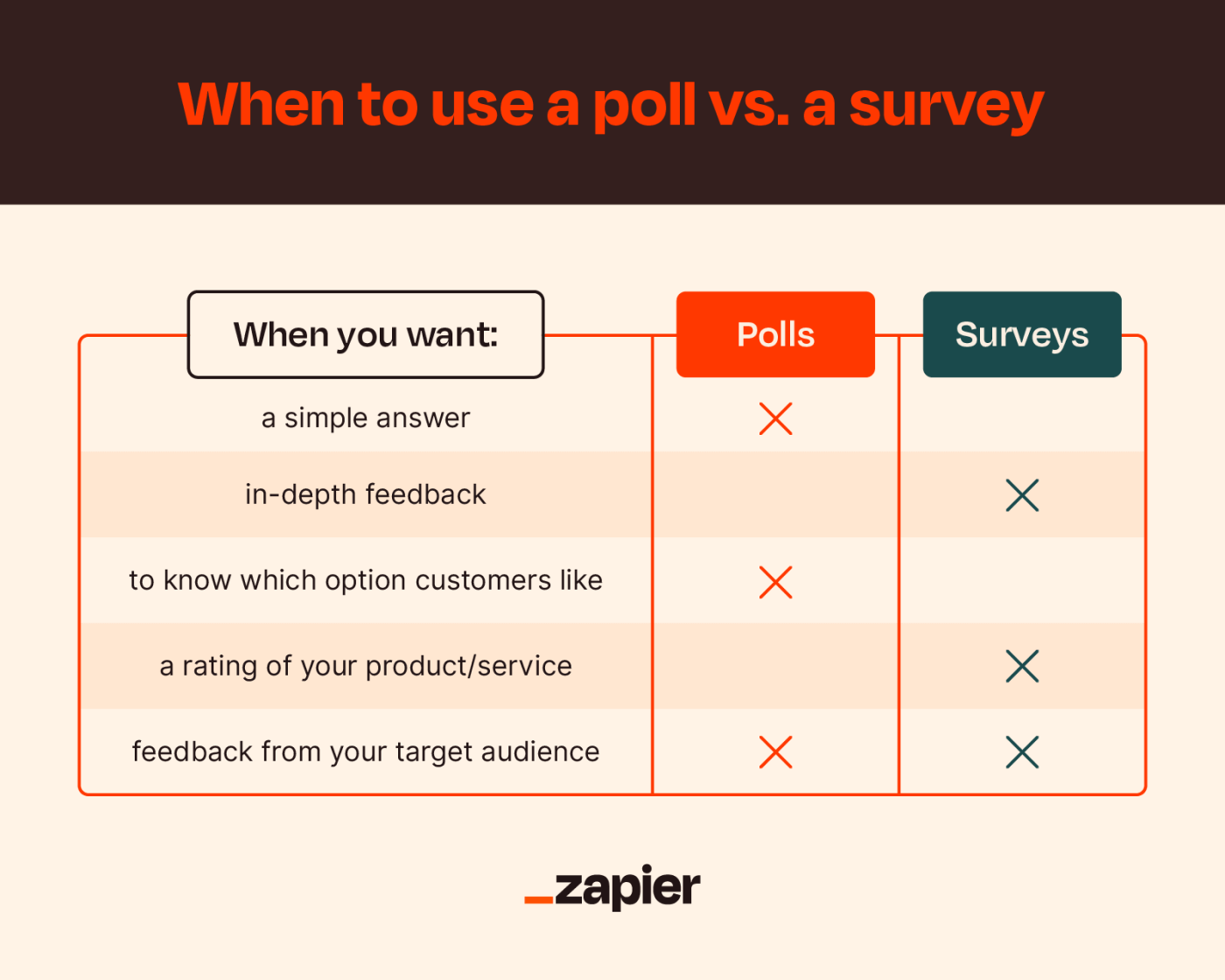
*Pro-Tip: Use a social media listening tool to monitor customer sentiment and respond to negative brand mentions with kindness and solutions. This is key to staying on top of your brand’s reputation.
6. Don’t forget to implement audience feedback
Asking for feedback without implementing it is useless.
When examining your audience’s suggestions, take their comments seriously. What can you realistically accommodate? What would better serve them and your company?
Messaging do’s and don’ts
7. Do have a clear brand message for your target market
So many businesses fail on social media simply by not having a clear and consistent brand message. If your audience doesn’t know who you help, how, and why, they’ll never trust you to solve their problems.
The good news is, having a clear brand message is pretty simple.
Just adapt the following template and include the message throughout your social media content. If you follow this rhythm, your audience will never have to guess what you do or who you serve.
Clear Brand Message Template:
“We’re a ____ that helps ____ do ____ by ____” + a call-to-action (CTA).
“For instance, we’re a project management company that helps construction agencies complete projects 10 weeks faster than our competitors. Book a demo to see how our unique formula can help you plan a construction project in record time.”
To help set the stage for clear brand messaging, make sure your social media bios reflect who you help and/or what you sell. Since character limits vary on each platform, you’ll have to be choosy about your wording.
8. Don’t write without a style guide
Having a strong brand identity means having a consistent brand voice and messaging style your audience aligns with and can rely on.
That’s why it’s important to give your social media marketing team a company style guide they can reference to create a consistent voice, every time.
In your brand style guide, be sure to include:
- Terms to avoid
- Brand tone of voice and style
- Grammar guidelines
- Relevant keywords to reference
- CTAs to focus on
- Audience pain points and solutions to cover
- Types of content to focus on
- Your image policy
- Any social proof your team should reference, such as mentions, user-generated content, reviews, or testimonials
Piggybacking on that last point, you can also use a social media listening tool to pull positive brand mentions for your team to share when relevant.
For instance, when PantherHR announced its shut down on Twitter, the company recommended that its users switch to the brand Remote, a company specializing in HR services and payroll processing:
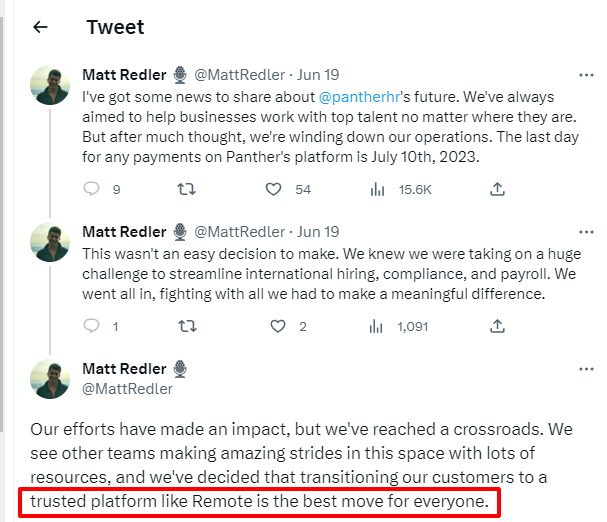
After seeing the mention, Remote demonstrated empathy by confirming its commitment to assisting PantherHR’s clients as they transition over:
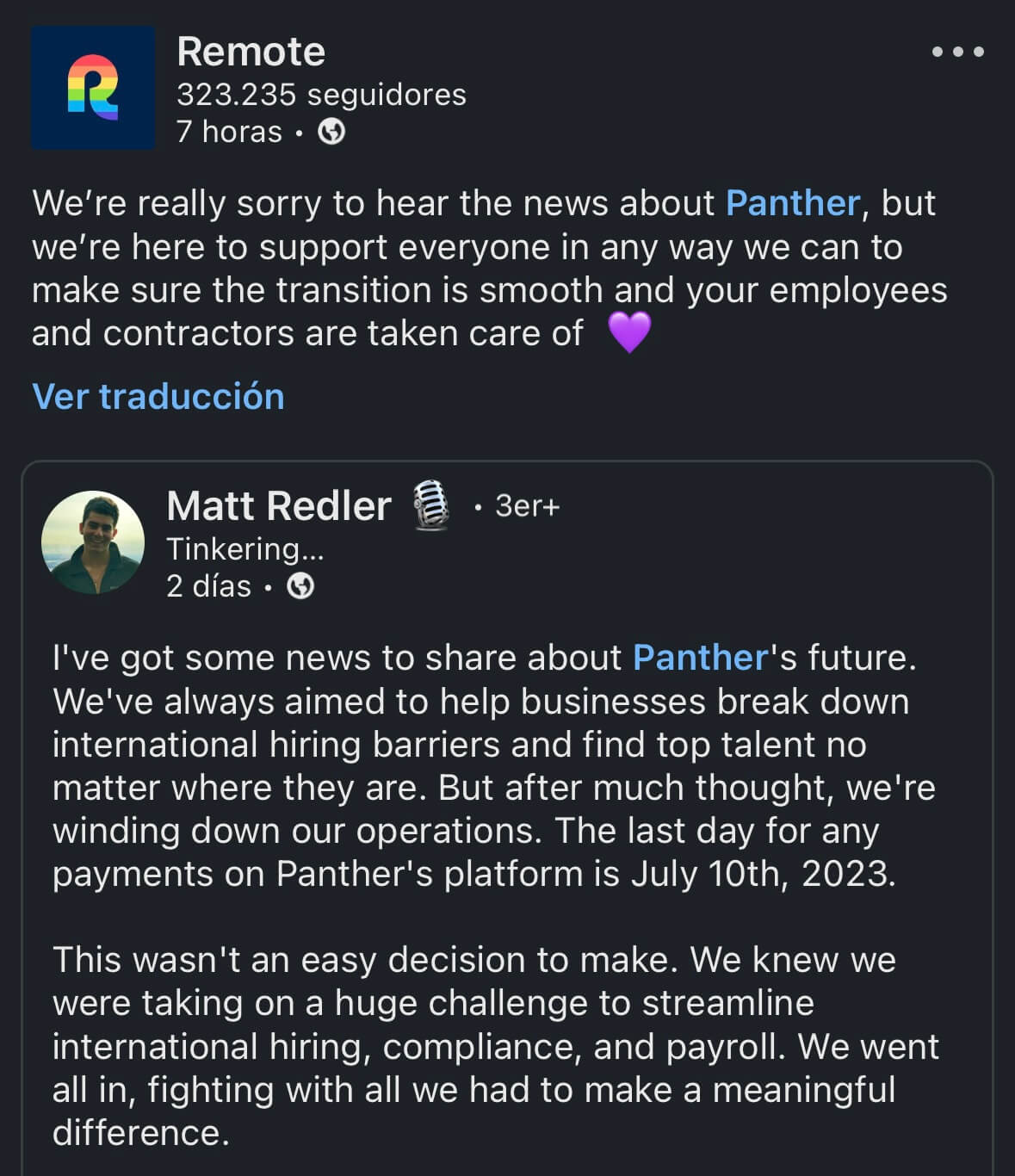
As you can see in this example, using a social media listening tool can help you quickly spot any users that mention your brand, so you can respond with a solution as soon as possible.
9. Do use prompt engineering to save time writing content
Planning social media batches can take months of hard work — when you write every piece of content manually, that is.
Luckily, with AI writing assistants, you can use prompt engineering to save time writing endless social media posts. Check out our Free AI writer tool to give it a try for yourself!

10. Don’t post AI-generated copy without editing it to your unique brand voice first
While you can set a tone for your AI writing assistant to follow, you always want to edit the copy it spits out to make sure it matches your unique brand voice. This is another example of when a company style guide comes in handy.
We also recommend proofing your work with an AI copyeditor, such as Writer or Grammarly, to make sure your copy is clean and grammatically correct.
Visual content do’s and don’ts
11. Do use engaging visuals to captivate your audience
Grab your audience’s attention with captivating static images, carousels, videos, infographics, and interactive Story content.
For example, Clean Origin’s strategic use of Instagram showcases the inherent strength of visual content in capturing the hearts and minds of potential customers.
By posting gorgeous photos of its quality lab-grown diamond stud earrings, Clean Origins creates a visual feast that grabs attention and sparks intrigue among users scrolling through their feeds. The allure of its jewelry, captured in high-quality photography work, is hard to resist, drawing people in and prompting them to explore more about Clean Origin’s offerings.

12. Don’t use inconsistent colors, fonts, and images
Make sure your visuals follow a consistent color palette, font, and overall style.
For example, on Instagram, maintaining a cohesive and visually appealing presence is crucial, as the platform is known for its aesthetics. A well-curated grid captures attention and reflects your brand’s identity. To streamline your planning process, utilizing an Instagram grid planner can be a game-changer.
These tools allow you to carefully plan and organize your content, ensuring a consistent and eye-catching aesthetic for your brand. With an Instagram grid planner, you can strategically arrange your posts, experiment with themes and color schemes, and create an engaging narrative that resonates with your audience.
13. Do brand your images
Add your company logo to your visuals so social media users can quickly find your brand if they like your content. This is pivotal to capitalizing on brand mentions and reposts. It can also help you attract a wider audience if your branded posts go viral.
14. Don’t share the same visuals on every social media platform
Vary your images and content per channel — remember it’s important to share content that’s native to each social media platform.
Thankfully, there’s a super easy way to streamline the process.
As we covered in Do #1, you need to ensure your social media content fits within your overarching content marketing strategy. A simple way to tie it all together, is to repurpose content and image snippets from your blog posts and share them on relevant social media channels.
For instance, you could pull:
- An infographic from your blog post and share it on LinkedIn
- A video from your blog post and share it on YouTube
- Static images from your article and share them on Instagram
Wrap up
Ready to create a social media presence that can help you reach your business goals? Save, print, and share this article with your social media team for easy reference.
By implementing the do’s and don’ts we shared today, you can create effective social media branding that inspires your target audience and helps your business grow.
For good measure, here’s a quick review of the do’s and don’ts we covered in this article:
- 1. Do create relevant content for a specific target audience
- 2. Don’t ignore your audience’s pain points
- 3. Do track your audience’s engagement rate
- 4. Don’t obsess over vanity metrics
- 5. Do ask for audience feedback
- 6. Don’t forget to implement audience feedback
- 7. Do have a clear brand message for your target market
- 8. Don’t write without a style guide
- 9. Do use prompt engineering to save time writing content
- 10. Don’t post AI generated copy without editing it to your unique brand voice first
- 11. Do use engaging visuals to captivate your audience
- 12. Don’t use inconsistent colors, fonts, and images
- 13. Do brand your images
- 14. Don’t share the same visuals on every social media platform
That’s it for now. 🙂
Here’s to your success!









